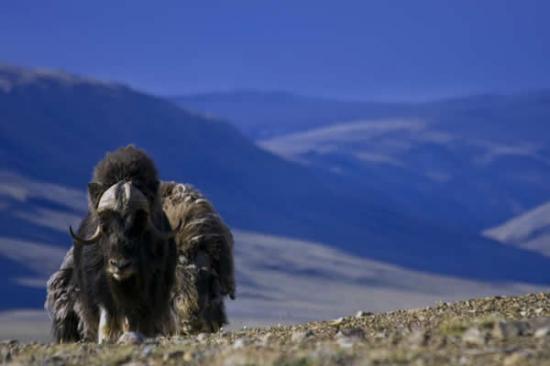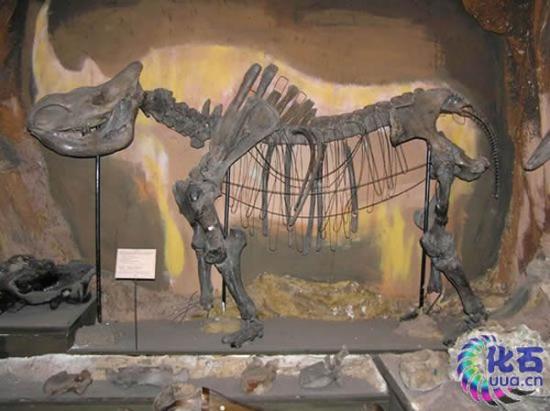
寒温带的麝牛

披毛犀化石
披毛犀(woolly rhinoceros)、猛犸象(woolly mammoth)、野马(wild horse)、驯鹿(reindeer)、野牛(bison)和麝牛(musk ox)这些大型草食性哺乳动物曾广泛分布于世界各大陆,但在过去的1多万年以来,都相继灭绝或濒临灭绝。一个包括古生物学家,地质学家,遗传学家和气候建模人员的国际研究团队首次同时使用了遗传学,气候学和考古学数据来揭示这些大型哺乳动物那段时间到底经历了怎样的演化历史。相关研究成果发现在著名科学杂志《自然》《Nature》上。
团队主要负责人,哥本哈根大学(University of Copenhagen)的Willerslev教授介绍说:“我们的研究结果完全推翻了过去所认为灭绝是由单一触发因素所造成的理论,新的研究数据表明,气候变化和人类活动对不同物种的影响结果不尽相同。”
宾夕法尼亚州立大学(Penn State University)生物学教授Shapiro则解释道:“在距今200万到1.2万前,地球经历了多次的气候波动,在气候寒冷时期,地球表面被大规模冰川所覆盖,我们称其为冰期,两次冰期之间是相对温暖的间冰期。我们所研究六种大型哺乳动物都是属于寒温带动物,在间冰期期间,它们需要找到合适的避难场所才能得以生存,在顺利度过了多次冰期-间冰期循环后,为何它们大部分没有在最后一次冰期结束后幸存下来一直科学家们仍待解决的问题。”
为此,研究人员们综合多方面的研究数据,包括这些哺乳动物的DNA信息,古气候信息,考古证据等等。DNA遗传信息可以提供它们种群数量的变化历史,古气候信息则提供过去的温度和降水信息,而考古证据能让我们了解到古人类活动对这些哺乳动物产生了哪些影响。
相关英文论文摘要:
Species-specific responses of Late Quaternary megafauna to climate and humans
Despite decades of research, the roles of climate and humans in driving the dramatic extinctions of large-bodied mammals during the Late Quaternary period remain contentious. Here we use ancient DNA, species distribution models and the human fossil record to elucidate how climate and humans shaped the demographic history of woolly rhinoceros, woolly mammoth, wild horse, reindeer, bison and musk ox. We show that climate has been a major driver of population change over the past 50,000 years. However, each species responds differently to the effects of climatic shifts, habitat redistribution and human encroachment. Although climate change alone can explain the extinction of some species, such as Eurasian musk ox and woolly rhinoceros, a combination of climatic and anthropogenic effects appears to be responsible for the extinction of others, including Eurasian steppe bison and wild horse. We find no genetic signature or any distinctive range dynamics distinguishing extinct from surviving species, emphasizing the challenges associated with predicting future responses of extant mammals to climate and human-mediated habitat change.
英文论文链接:https://www.nature.com/nature/journal/vaop/ncurrent/full/nature10574.html







